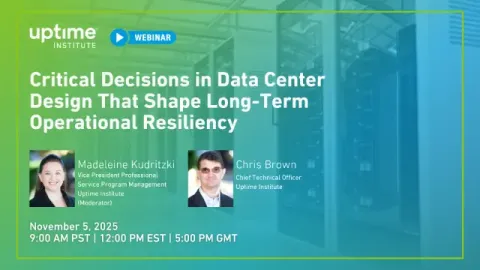Enhanced geothermal systems use advanced drilling and hydrofracturing techniques to access geothermal energy in more locations. Some data centers may use enhanced geothermal energy for on-site, low-carbon power.
filters
Explore All Topics
The European Commission published the final assessment of the data center label and minimum performance standards (MPS) in October. The final delegated act could require posting a label in 2026 or 2027, with MPS values likely to be 2 years away.
The proposed Scope 2 Guidance updates radically alter current accounting methodologies. These changes will complicate Scope 2 offset markets (e.g., EACs, RECs and GOs), adding unnecessary complexity and resource demands to Scope 2 accounting.
The European Parliament plans to simplify environmental reporting beyond what the Omnibus proposed in early 2025. Under the new reporting thresholds, only the largest 10% of companies would remain subject to CSDDD and CSRD requirements.
A bout of consolidation and investment activity in cooling systems in the past 12 months reflects widespread expectation of a continued spending surge on data center infrastructure.
There is an expectation that AI will be useful in data center operations. For this to happen, software vendors need to deliver new products and use cases - and these are starting to appear more often.
Performant cooling requires a full-system approach to eliminate thermal bottlenecks. Extreme silicon TDPs and highly efficient cooling do not have to be mutually exclusive if the data center and chip vendors work together.
China wants to expand its data center capacity, and to achieve net-zero emissions. To this end, the nation is regulating for efficiency and renewable energy, as well as harnessing centralized control, to balance growth with sustainability.
Uptime's 2025 cooling survey found that fewer respondents cited sustainability as a primary driver for direct liquid cooling (DLC). Gradual advancement of DLC plans may be refining operator understanding of its incentives.
Uptime Institute's latest Data Center Spending Survey (n=850) looks ahead to data center spending and budgets for 2026, as well as the current supply chain market in the industry.The attached data files below provide full results of the survey,…
As of today, over 1,600 data centers have achieved Tier Certification of Design Documents - yet every design package contains design elements that will critically reduce the ability to effectively operate the facility, increasing the risk to…
The Azure outage highlights a blind spot in resiliency planning. It is not only cloud compute that can fail - shared global network services such as DNS and CDNs can disrupt access to systems anywhere, including on-premises.
A fire in South Korea's government data center shows how a misjudged safety fix and a lithium-ion battery can spark a national outage, proving that battery chemistry, placement, and procedures are central to resilience.
Financial institutions are embracing public cloud for some mission-critical workloads, and using it as a launchpad for AI development.
Consensus is growing that a major market "correction" is coming: while some infrastructure operators are highly exposed, others may stand to benefit.
 Peter Judge
Peter Judge

 Jay Dietrich
Jay Dietrich



 Daniel Bizo
Daniel Bizo

 Max Smolaks
Max Smolaks



 Jacqueline Davis
Jacqueline Davis

 Paul Carton
Paul Carton
 Anthony Sbarra
Anthony Sbarra
 Laurie Williams
Laurie Williams

 Madeleine Kudritzki
Madeleine Kudritzki
 Chris Brown
Chris Brown

 Dr. Owen Rogers
Dr. Owen Rogers

 Dr. Rand Talib
Dr. Rand Talib


 Andy Lawrence
Andy Lawrence
